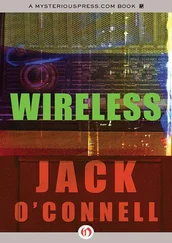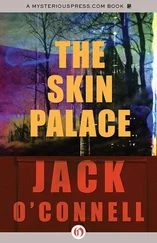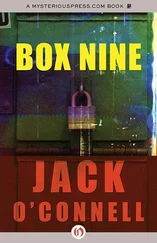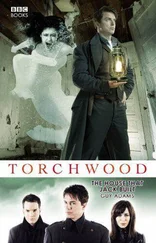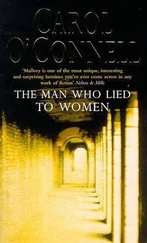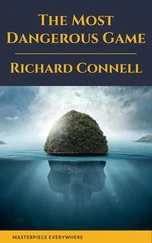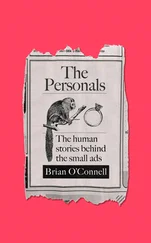Jack O'Connell - The Resurrectionist
Здесь есть возможность читать онлайн «Jack O'Connell - The Resurrectionist» весь текст электронной книги совершенно бесплатно (целиком полную версию без сокращений). В некоторых случаях можно слушать аудио, скачать через торрент в формате fb2 и присутствует краткое содержание. Год выпуска: 2009, Издательство: Algonquin Books, Жанр: Современная проза, на английском языке. Описание произведения, (предисловие) а так же отзывы посетителей доступны на портале библиотеки ЛибКат.
- Название:The Resurrectionist
- Автор:
- Издательство:Algonquin Books
- Жанр:
- Год:2009
- ISBN:нет данных
- Рейтинг книги:4 / 5. Голосов: 1
-
Избранное:Добавить в избранное
- Отзывы:
-
Ваша оценка:
- 80
- 1
- 2
- 3
- 4
- 5
The Resurrectionist: краткое содержание, описание и аннотация
Предлагаем к чтению аннотацию, описание, краткое содержание или предисловие (зависит от того, что написал сам автор книги «The Resurrectionist»). Если вы не нашли необходимую информацию о книге — напишите в комментариях, мы постараемся отыскать её.
those who create them and those who consume them. About the nature of consciousness and the power of the unknown. And, ultimately, about forgiveness and the depth of our need to extend it and receive it.
The Resurrectionist — читать онлайн бесплатно полную книгу (весь текст) целиком
Ниже представлен текст книги, разбитый по страницам. Система сохранения места последней прочитанной страницы, позволяет с удобством читать онлайн бесплатно книгу «The Resurrectionist», без необходимости каждый раз заново искать на чём Вы остановились. Поставьте закладку, и сможете в любой момент перейти на страницу, на которой закончили чтение.
Интервал:
Закладка:
In turn, she moves to her neighbor and assists Fatos, who has lost his mule face and now looks like the prince of a Nordic tribe.
Fatos calls out Aziz, who has grown legs and feet.
Aziz springs Nadja whose lobster limbs have become perfectly delineated hands and feet, ten fingers and ten toes and each of them exquisite.
Nadja bids Jeta to wake and the human skeleton has grown a pink and healthy crop of flesh.
Jeta summons Antoinette, whose pinhead has bloomed and rounded into a skull that could carry the crown in any number of pageants.
Antoinette calls forth Marcel and Vasco who rise independently, Vasco stepping onto the sand with a look of shock on his face. Until he spies Marcel climbing out of the box to join him. They touch their hips simultaneously and then break into a little jig before waking Durga.
Who no longer needs three-quarters of her casket. She emerges onto the beach lithe and slim, unable to stop looking at her own arms and thighs, even as she invites Kitty to join her.
The beloved dwarf shows first one leg and then another and both of them long and perfectly shaped. She rises on these gams, tall and strong enough to captain a volleyball team.
But like the rest of her troupe, she is unable to revel in the joy of her new normalcy until the last one joins them and they are whole together. Kitty goes down on one knee, leans over the last coffin and reaches in to wake her man.
And then she draws back and crumples on the sand in a heap of silent tears. The others freeze in place, but Dr. Fliess runs to the coffin and falls beside it. Then he rears up and begins to scream, filling the cool morning air with obscene rage before collapsing, like Kitty, into a convulsion of bitter weeping.
Ever the patriarch, it is Bruno who moves to the casket and lifts the limp, soaked body up into the air. The boy is still covered in his feathers. His freak nature could not be rewritten. Fliess’s magic could not touch him.
While Fliess continues his tantrum, his fists pounding the sand like a child denied a toy, the troupe gathers around the coffin. And Bruno, even without his brawn, has no trouble hoisting the body into his arms. He holds Chick for a time so that the others can draw around and stroke their brother and gaze on his beaked face. Bruno places this fallen bird into the arms of Kitty, who weeps like mother, sister, lover, her tears shed on feathers that, already, are going brittle and dull.
Bruno knows what must be done. He steps around the doctor, takes hold of Chick’s coffin lid, and tears it free of the box. Kitty looks up at the sound. Bruno nods to her and, though her sobbing increases, she manages to nod back. This time, no one needs to explain a thing to Antoinette, the former pinhead. This time, Antoinette understands it all.
And Marcel and Vasco need not synchronize their steps as they lead the way down to the shore. And Durga has no need to stop to catch her breath as she follows. No, the tribe realizes this is, indeed, the last chapter. Realizes that there are no more Goldfaden Freaks. It is, suddenly, a story ready only to recede into a suspect history.
They break in two, their feet in the water up to their ankles and no more. Bruno walks between their columns, coffin lid under his arm like a surfboard. He places the lid on the surface of the water, puts a palm on it and makes sure it will float, and then he holds it in place as it bobs, trying to ride the gentle current pulling outward.
Kitty comes to the water now, her Chick in her arms. She wades in to her waist and the water laps up to her breasts. Bruno grips the lid with both hands and it fights him. Kitty places her love on his back, on the wood. She leans down, brings her mouth to the hard beak that she has known so well for so long. The kiss lingers and Bruno must take one hand from the board and place it on Kitty’s shoulder. She straightens, as her whole body heaves. Behind her, someone, maybe Jeta, maybe Aziz, begins to keen with a kind of grief that the world has not known in ages.
Bruno takes this as a sign to let go. He shoves the coffin lid into the current and the body of the chicken boy begins to float off toward the horizon. The rising sun neither mocks nor comforts. The gulls begin to follow the tiny barge. The erstwhile freaks fall to their knees, one by one, the surf swirling in their laps. They make themselves study the progress of the barge through blurring vision.
The last picture of the last issue of Limbo is a close-up of the chicken boy’s face, eyes open but lifeless, the rising sun looming in the upper right-hand corner of the frame. Inked below the face is the last message from the artist and author, from the creator of Limbo.
Not everyone
it reads
is meant to be normal.
Not every story
it reads
has a happy ending.
27
The final picture loses focus and stability, turns into a piece of carnival spin art, as Danny throws the comic book into the air. It hits the poster above his bed and knocks it to the floor.
What comes next is a moment that someone with medical knowledge might term fugue. Danny sits up as if prodded by electricity. But then he holds in place. Were he a cartoon boy, and were we able to remove the back of his skull like the lid of a cookie jar, we might see a literal overload of circuits, a convulsion of charges running too fast or too slow, but all in the wrong direction. This lost moment lasts under three seconds. And when it ends, the boy begins to scream.
At that moment, Kerry is in the kitchen, mixing up a homemade yogurt dressing for her salad. But Sweeney can’t see this. He still can see only the squint-compressed vision of his son, his cartoon boy, in the midst of a nonsensical rage that has him shredding the Limbo pillow on his bed.
This is when Kerry enters the picture. She runs into the room to find the air filling rapidly with white and gray feathers. She tries to yell over Danny’s screams.
“What’s wrong?” she cries. “Danny, what’s wrong?”
Sweeney knows the look of growing panic on her face. He hadn’t seen it often but the few times it did appear made an impression. Danny throws what’s left of the pillow at his mother. It hits her in the chest, falls to the floor. She moves to the bed, tries to grab the boy, her sweet, sunny child, who is pounding his bedroom wall hard enough to bloody his fist and to poke a hole in the plaster, using his stubby fingernails to tear off the Limbo wallpaper. Kerry climbs up onto the bed, grabs Danny around the waist, manages to turn him toward her. He is hysterical and enraged and incoherent. Kerry is on her knees, level with him, and Danny hauls off and hits her across the face.
Stunned, she releases the boy and he jumps, animallike, off the bed in one leap and flees the room, but not before he runs his arm down the length of his little bureau, sending Limbo lamp and Limbo coin bank and chicken boy action figure to the floor in a pile of glass and ceramic shards.
“Danny,” the mother screams, now terrified.
She chases the boy into the hall, where he’s catapulting himself from wall to wall, kicking and screeching and punching, trying to break and gouge everything he sees. He runs into his parents’ bedroom, grabs a cast-iron doorstop from the floor, somehow hoists it and heaves it. The mirror above the dresser shatters as Kerry steps into the room. And on the heels of her disbelief comes her own outrage and anger.
Читать дальшеИнтервал:
Закладка:
Похожие книги на «The Resurrectionist»
Представляем Вашему вниманию похожие книги на «The Resurrectionist» списком для выбора. Мы отобрали схожую по названию и смыслу литературу в надежде предоставить читателям больше вариантов отыскать новые, интересные, ещё непрочитанные произведения.
Обсуждение, отзывы о книге «The Resurrectionist» и просто собственные мнения читателей. Оставьте ваши комментарии, напишите, что Вы думаете о произведении, его смысле или главных героях. Укажите что конкретно понравилось, а что нет, и почему Вы так считаете.



